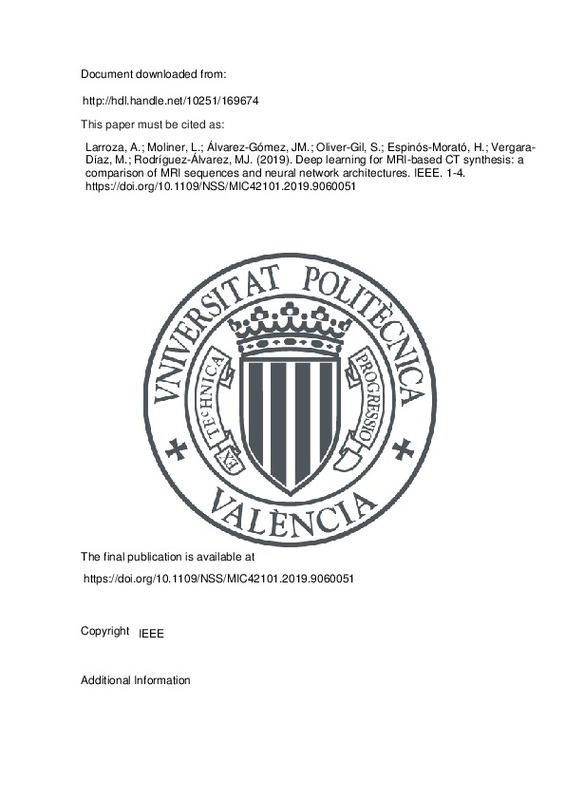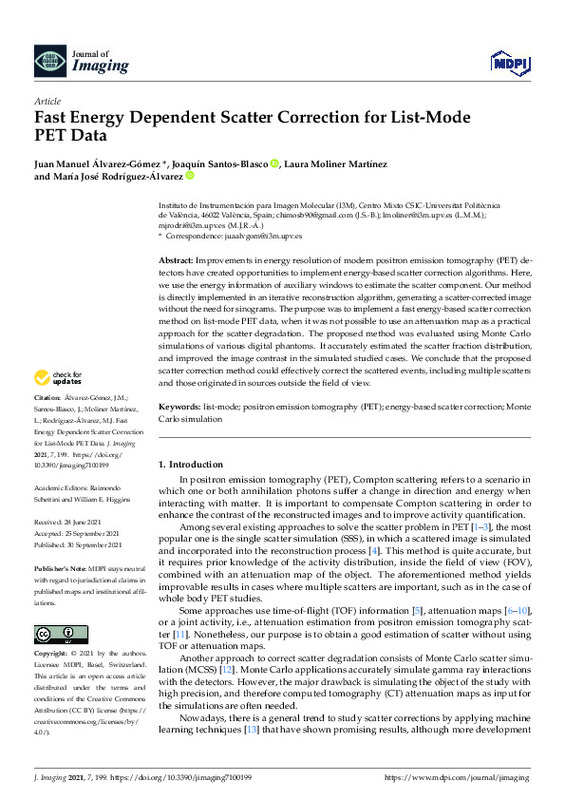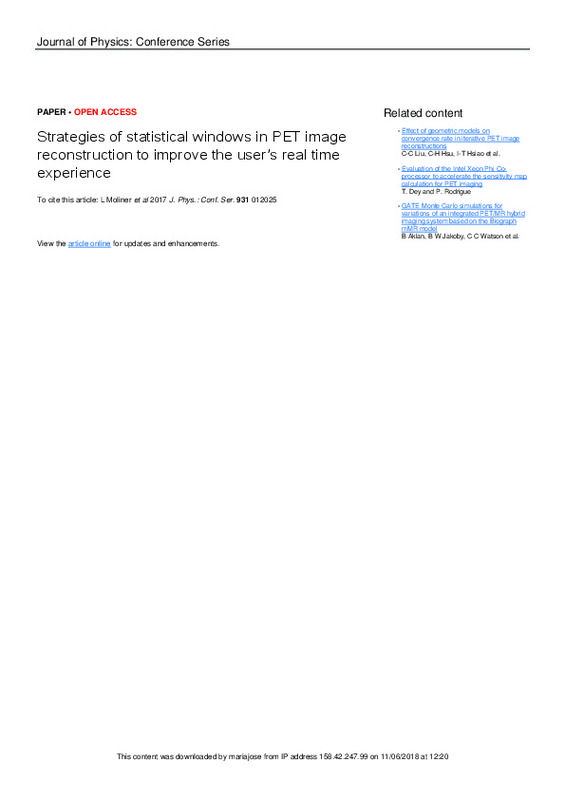

Listar por autor "Álvarez Gómez, Juan Manuel"
RiuNet: Repositorio Institucional de la Universidad Politécnica de Valencia
- RiuNet repositorio UPV
- :
- Listar por autor
JavaScript is disabled for your browser. Some features of this site may not work without it.
Buscar en RiuNet
Listar
Mi cuenta
Ayuda RiuNet
Admin. UPV
Listar por autor "Álvarez Gómez, Juan Manuel"
Mostrando ítems 1-5 de 5
-
Larroza, Andrés; Moliner, Laura; Álvarez-Gómez, Juan Manuel; Oliver-Gil, Sandra; Espinós-Morató, Héctor; Vergara-Díaz, Marina; Rodríguez-Álvarez, María J. (IEEE, 2019-11-02)[EN] Synthetic computed tomography (CT) images derived from magnetic resonance images (MRI) are of interest for radiotherapy planning and positron emission tomography (PET) attenuation correction. In recent years, deep ...
-
Álvarez-Gómez, Juan Manuel; Santos-Blasco, Joaquín; Moliner Martínez, Laura; Rodríguez-Álvarez, María José (MDPI AG, 2021-10)[EN] Improvements in energy resolution of modern positron emission tomography (PET) detectors have created opportunities to implement energy-based scatter correction algorithms. Here, we use the energy information of ...
-
Identifying Demyelinating and Ischemia brain diseases through magnetic resonance images processing Castillo, Darwin P.; Samaniego, René J.; Jimenez, Yuliana; Cuenca, Luis A.; Vivanco, Oscar A; Álvarez-Gómez, Juan Manuel; Rodríguez-Álvarez, María J. (IEEE, 2019-11-02)[EN] ¿Brain Magnetic Resonance Images are a very useful tool for the diagnosis of brain diseases and analyse brain changes. The appropriate processing (neuroimaging) can help to identify, measure and classify different ...
-
Cañizares, Gabriel; Espinós-Morató, Héctor; Santos, Joaquín; Hernández, Ángel; Moliner, Laura; Álvarez-Gómez, Juan Manuel; González Martínez, Antonio Javier; Sánchez, F; Rodríguez-Álvarez, MJ.; Benlloch Baviera, Jose María (IEEE, 2019-11-02)[EN] Motion correction algorithms are necessary in PET studies where the patient cannot remain totally static. Otherwise, artifacts appear in the final reconstructed image, degrading the spatial resolution or even misplacing ...
-
Moliner Martínez, Laura; Correcher Salvador, Carlos; Giménez-Alventosa, Vicent; Ilisie, V.; Álvarez-Gómez, Juan Manuel; Sánchez Góez, Sebastián; Rodríguez-Álvarez, MJ (IOP Publishing, 2017)[EN] Nowadays, with the increase of the computational power of modern computers together with the state-of-the-art reconstruction algorithms, it is possible to obtain Positron Emission Tomography (PET) images in practically ...
Mostrando ítems 1-5 de 5

Universitat Politècnica de València. Unidad de Documentación Científica de la Biblioteca (+34) 96 387 70 85 · RiuNet@bib.upv.es






